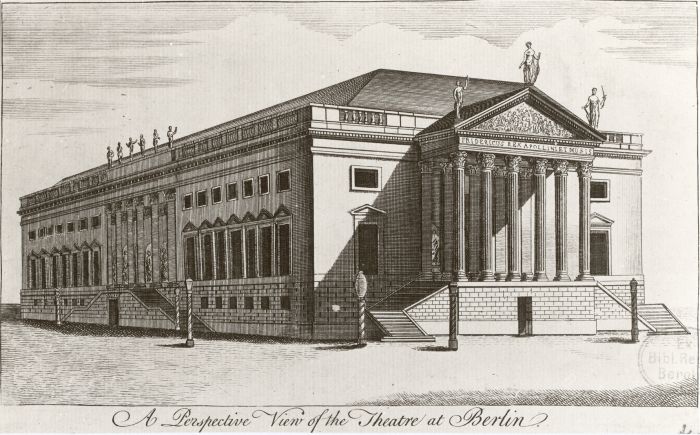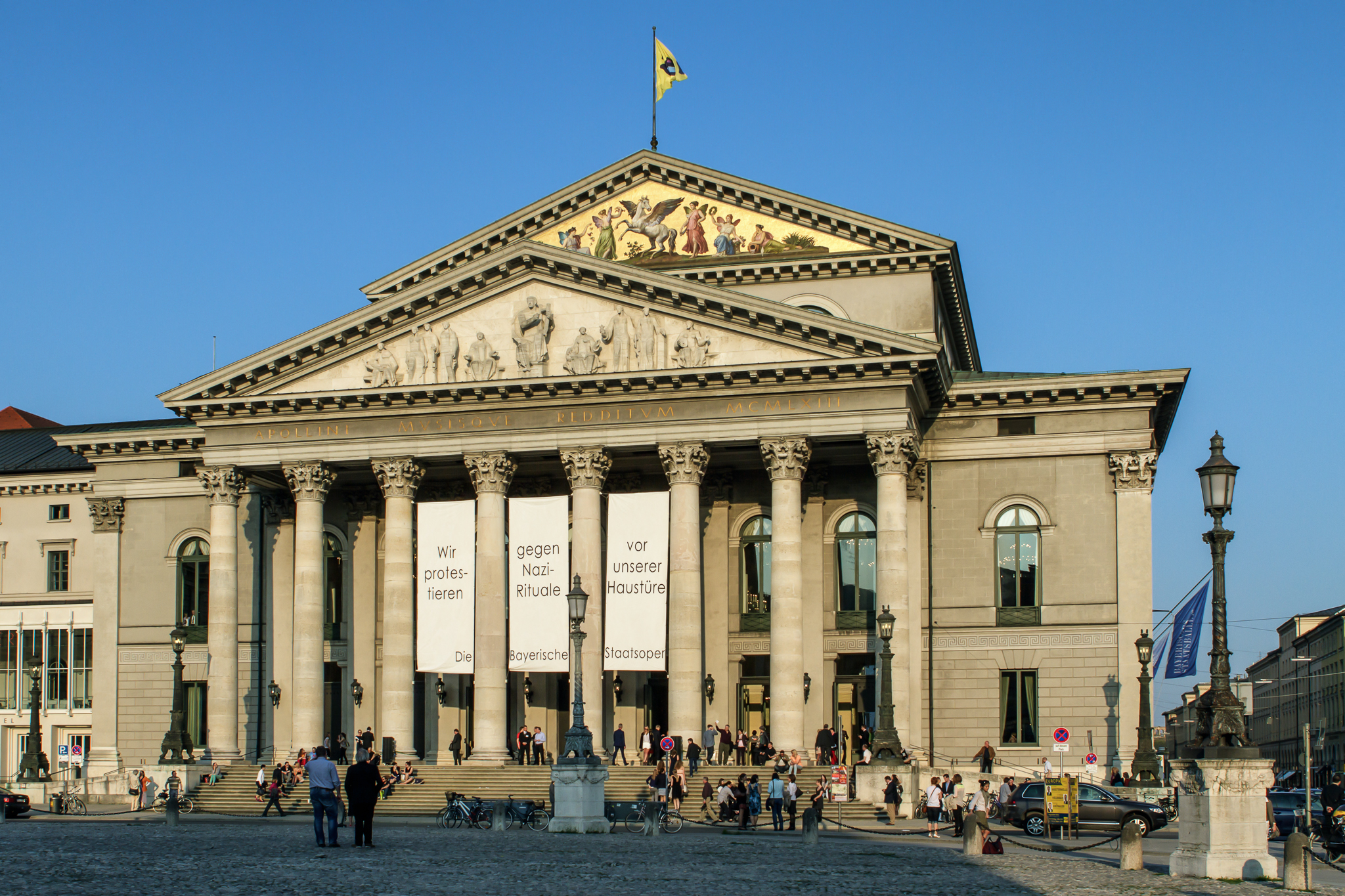|
June Card
June Card (born April 10, 1937) is an American soprano and stage director who had an active career in operas and concerts from 1959 through today. She began her career as a chorus girl on Broadway before moving into opera. She established herself as an operatic soprano in Germany during the mid to late 1960s, ultimately forging a more-than-30-year-long partnership with the Oper Frankfurt. She also appeared as a guest artist with major opera houses internationally and worked as a soloist in the oratorio repertoire. In recent years she has been active as a stage director for opera productions in Germany, France and America, and worked as a voice teacher and master class instructor. Career Born in Dunkirk, New York, Card studied singing with May Browner at the Mannes College The New School for Music. While a student she began her career performing as an ensemble member in the original Broadway production of Rodgers and Hammerstein's ''The Sound of Music'' in 1959-1960, including ... [...More Info...] [...Related Items...] OR: [Wikipedia] [Google] [Baidu] |
Dunkirk, New York
Dunkirk is a city in Chautauqua County, New York, United States. It was settled around 1805 and incorporated in 1880. The population was 12,743 as of the 2020 census. Dunkirk is bordered on the north by Lake Erie. It shares a border with the village of Fredonia to the south, and with the town of Dunkirk to the east and west. Dunkirk is the westernmost city in the state of New York. History The Iroquoian languages-speaking Erie people occupied this area of the forested lakefront along the southern shore of Lake Erie well into the 1600s, when Europeans, mostly French, started trading around the Great Lakes. They were pushed out by the Seneca people, one of the Five Nations of the powerful Iroquois League, based here and further east in New York. The European-American demarcation and settlement of Chadwick Bay and subsequent naming of Dunkirk - after Dunkirk in France - began in earnest in 1826. The Dunkirk Lighthouse at Point Gratiot was built soon after and still stands. Dun ... [...More Info...] [...Related Items...] OR: [Wikipedia] [Google] [Baidu] |
Gentlemen, Be Seated!
"Gentlemen, Be Seated" is a science fiction short story by American writer Robert A. Heinlein. It was first published in the May 1948 issue of ''Argosy'' magazine. It was later included in two of Heinlein's collections, ''The Green Hills of Earth'' (1951), and ''The Past Through Tomorrow'' (1967). Plot summary The story tells of a visit to a tunnel on the surface of the Moon which goes awry when a pressure seal fails, trapping three men (a supervisor, a reporter, and a tunnel worker). The title of the story derives from the way they plug an air leak while awaiting rescue: by sitting on it. The phrase "Gentlemen, Be Seated!" is the opening line of the interlocutor in a traditional minstrel show. It was also, at the time the story was written and while Heinlein attended, the opening line for all classes at the military and naval academies (as well as classes for officers at the various service schools) in the United States. The story might have been inspired by an episode in "Ba ... [...More Info...] [...Related Items...] OR: [Wikipedia] [Google] [Baidu] |
Liceu
The Gran Teatre del Liceu (, English: Great Theatre of the Lyceum), known as ''El Liceu'', is an opera house in Barcelona, Catalonia, Spain. Located in La Rambla, it is the oldest running theatre in Barcelona. Founded in 1837 at another location, El Liceu opened at its current location on 4 April 1847. The theatre was rebuilt after two fires in 1861 and 1994 and reopened on 20 April 1862 and 7 October 1999, respectively. On 7 November 1893, on the opening night of the season, an anarchist threw two bombs into the stalls, and some twenty people were killed and many more were injured. Between 1847 and 1989, the Liceu was the largest opera house in Europe by capacity, with its 2,338 seats at the time. Since 1994, the Liceu has been owned and managed by a public foundation, whose Board of Trustees comprises members representing the Ministry of Culture of the Government of Spain, the Generalitat de Catalunya, the Provincial Deputation of Barcelona and the City Council of Barc ... [...More Info...] [...Related Items...] OR: [Wikipedia] [Google] [Baidu] |
La Monnaie
The Royal Theatre of La Monnaie (french: Théâtre Royal de la Monnaie, italic=no, ; nl, Koninklijke Muntschouwburg, italic=no; both translating as the "Royal Theatre of the Mint") is an opera house in central Brussels, Belgium. The National Opera of Belgium, a federal institution, takes the name of this theatre in which it is housed—La Monnaie in French or De Munt in Dutch—referring both to the building as well as the opera company. As Belgium's leading opera house, it is one of the few cultural institutions which receive financial support from the Federal Government of Belgium. Other opera houses in Belgium, such as the Vlaamse Opera and the Opéra Royal de Wallonie, are funded by regional governments. La Monnaie is located on the Place de la Monnaie/Muntplein, not far from the Rue Neuve/Nieuwstraat and the Place de Brouckère/De Brouckèreplein. The current edifice is the third theatre on the site. The facade dates from 1818 with major alterations made in 1856 and 1 ... [...More Info...] [...Related Items...] OR: [Wikipedia] [Google] [Baidu] |
La Fenice
Teatro La Fenice (, "The Phoenix") is an opera house in Venice, Italy. It is one of "the most famous and renowned landmarks in the history of Italian theatre" and in the history of opera as a whole. Especially in the 19th century, La Fenice became the site of many famous operatic premieres at which the works of several of the four major bel canto era composers – Rossini, Bellini, Donizetti, Verdi – were performed. Its name reflects its role in permitting an opera company to "rise from the ashes" despite losing the use of three theatres to fire, the first in 1774 after the city's leading house was destroyed and rebuilt but not opened until 1792; the second fire came in 1836, but rebuilding was completed within a year. However, the third fire was the result of arson. It destroyed the house in 1996 leaving only the exterior walls, but it was rebuilt and re-opened in November 2004. In order to celebrate this event the tradition of the Venice New Year's Concert started. Histo ... [...More Info...] [...Related Items...] OR: [Wikipedia] [Google] [Baidu] |
Holland Festival
The Holland Festival () is the oldest and largest performing arts festival in the Netherlands. It takes place every June in Amsterdam. It comprises theatre, music, opera and modern dance. In recent years, multimedia, visual arts, film and architecture were added to the festival roster. Performances take place in Amsterdam venues such as the city theatre, the opera, the Concertgebouw and Muziekgebouw concert halls and the Westergas factory site. Each edition is loosely themed, and the programme features both contemporary work and classical pieces presented with a modern edge. History The festival was founded in 1947 and features some of the world's top artists and performers, as well as lesser-known performers. Notable world premieres included Karlheinz Stockhausen's '' Helicopter String Quartet''. The festival introduced Maria Callas in the Netherlands, and was also the first to successfully set up a large symphonic tribute to Frank Zappa Frank Vincent Zappa (December ... [...More Info...] [...Related Items...] OR: [Wikipedia] [Google] [Baidu] |
Hamburg State Opera
The Hamburg State Opera (in German: Staatsoper Hamburg) is a German opera company based in Hamburg. Its theatre is near the square of Gänsemarkt. Since 2015, the current ''Intendant'' of the company is Georges Delnon, and the current ''Generalmusikdirektor'' of the company is Kent Nagano. History Opera in Hamburg dates to 2 January 1678 when the Oper am Gänsemarkt was inaugurated with a performance of a biblical Singspiel by Johann Theile. It was not a court theatre but the first public opera house in Germany established by the art-loving citizens of Hamburg, a prosperous member of the Hanseatic League. The Hamburg ''Bürgeroper'' resisted the dominance of the Italianate style and rapidly became the leading musical center of the German Baroque. In 1703, George Friedrich Handel was engaged as violinist and harpsichordist and performances of his operas were not long in appearing. In 1705, Hamburg gave the world première of his opera ''Nero''. In 1721, Georg Philipp Tel ... [...More Info...] [...Related Items...] OR: [Wikipedia] [Google] [Baidu] |
Edinburgh Festival
__NOTOC__ This is a list of arts and cultural festivals regularly taking place in Edinburgh, Scotland. The city has become known for its festivals since the establishment in 1947 of the Edinburgh International Festival and the Edinburgh Festival Fringe which runs alongside it. The latter is the largest event of its kind in the world. The term ''Edinburgh Festival'' is commonly used, but there is no single festival; the various festivals are put on by separate, unrelated organisations. However they are widely regarded as part of the same event, particularly the various festivals that take place simultaneously in August each year. The term ''Edinburgh Festival'' is often used to refer more specifically to the Fringe, being the largest of the festivals; or sometimes to the International Festival, being the original "official" arts festival. Within the industry, people refer to all the festivals collectively as the ''Edinburgh Festivals'' (plural). The festivals Listed in ... [...More Info...] [...Related Items...] OR: [Wikipedia] [Google] [Baidu] |
Cologne Opera
The Cologne Opera (German: Oper der Stadt Köln or Oper Köln) refers both to the main opera house in Cologne, Germany and to its resident opera company. History of the company From the mid 18th century, opera was performed in the city's court theatres by travelling Italian opera companies. The first permanent company in the city was established in 1822, and performed primarily in the Theater an der Schmierstraße (built in 1783 as a private theatre and also used for plays and concerts). The opera company later performed in Theater in der Glockengasse (built in 1872) and in the Theater am Habsburger Ring (built in 1902). The Theater am Habsburger Ring was constructed by the city of Cologne and became its first theatre to be specifically designed as an opera house. The opera house The current opera house was designed by the German architect, Wilhelm Riphahn. It was inaugurated on 8 May 1957 in the presence of Konrad Adenauer, then the Chancellor of Germany and a former mayor of Co ... [...More Info...] [...Related Items...] OR: [Wikipedia] [Google] [Baidu] |
Berlin State Opera
The (), also known as the Berlin State Opera (german: Staatsoper Berlin), is a listed building on Unter den Linden boulevard in the historic center of Berlin, Germany. The opera house was built by order of Prussian king Frederick the Great from 1741 to 1743 according to plans by Georg Wenzeslaus von Knobelsdorff in the Palladian style. Damaged during the Allied bombing in World War II, the former Royal Prussian Opera House was rebuilt from 1951 to 1955 as part of the Forum Fridericianum square. Nicknamed ''Lindenoper'' in Berlin, it is "the first theater anywhere to be, by itself, a prominent, freestanding monumental building in a city." History Names Originally called the ''Königliche Oper'' (Royal Opera) from 1743, it was renamed as the ''Preußische Staatsoper'' (Prussian State Opera) in 1919, then as the ''Deutsche Staatsoper '' in 1955. Until 1990, it housed the state opera of East Germany. Since 1990, it is officially called the ''Staatsoper Unter den Linden'' (State ... [...More Info...] [...Related Items...] OR: [Wikipedia] [Google] [Baidu] |
Bavarian State Opera
The Bayerische Staatsoper is a German opera company based in Munich. Its main venue is the Nationaltheater München, and its orchestra the Bayerische Staatsorchester. History The parent ensemble of the company was founded in 1653, under Electress consort Princess Henriette Adelaide of Savoy, when Giovanni Battista Maccioni's ''L'arpa festante'' was performed in the court theatre. In 1753, the Residence Theatre ( Cuvilliés Theatre) was opened as a major stage. While opera performances were also held in the Prinzregententheater (completed in 1901), the company's home base is the Nationaltheater München on Max-Joseph-Platz. In 1875, the Munich Opera Festival took place for the first time. Sir Peter Jonas became the general manager in 1993, the first British general manager of any major German-speaking opera house. In 2008, Nikolaus Bachler became Intendant (general manager) of the opera company, and Kirill Petrenko became Generalmusikdirektor (GMD) in 2013. In 2014 ... [...More Info...] [...Related Items...] OR: [Wikipedia] [Google] [Baidu] |
Staatstheater Am Gärtnerplatz
The Staatstheater am Gärtnerplatz (''State Theatre at Gärtnerplatz''), commonly called the Gärtnerplatztheater, is an opera house and opera company in Munich. (The "Gärtnerplatz" is an urban square in the borough Ludwigsvorstadt-Isarvorstadt.) Designed by Michael Reiffenstuel, it opened on 4 November 1865 as the city's second major theatre after the National Theatre. At times exclusively concerned with operetta, in recent years there have also been productions of opera, musicals and ballet. The scope of activities is similar to that of the Komische Oper in Berlin and the English National Opera in London. One of the most active theatres in Germany, its season lasts from September to July and comprises more than 200 performances. The current intendant is Josef Ernst Köpplinger. History In 1863, a committee for the founding of a ''Volkstheater'' (people's theatre) formed. Ludwig II of Bavaria authorized a new building in the borough Isarvorstadt on 10 May 1864. It was de ... [...More Info...] [...Related Items...] OR: [Wikipedia] [Google] [Baidu] |


_-_Facade.jpg)






